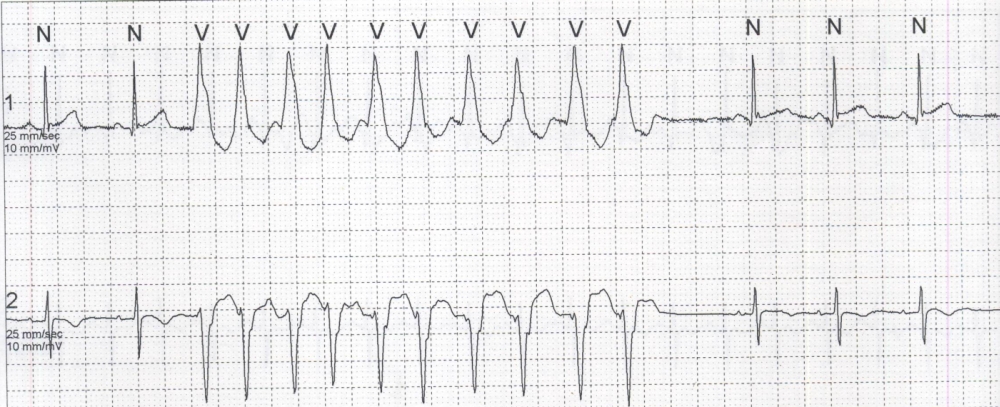Wide QRS tachycardia on Holter
Wide QRS tachycardia on Holter

Strip reproduced from a twenty four hour Holter monitoring record. Holter monitoring is used to elucidate intermittent arrhythmias like this which may not be captured by a short recording during conventional ECG. In Holter monitoring, multiple adhesive electrodes are attached over the chest and connected to a recorder which records the ECG data continuously for a day either on a magnetic tape used in audio tape recorders or in digital format in a digital memory. The data is later analysed in a Holter analyzer. Subject also keeps a diary of events of the day synchronized with the digital clock on the Holter monitor. If there is any suspected arrhythmia event like palpitation or giddiness, the person can press an event marker button on the Holter recorder which will display a marker on the tracing when recalled in the analyzer. This is very useful in exactly correlating the event with the corresponding ECG record.
The strip shown above has two channels showing couple of narrow QRS beats initially and three narrow QRS complexes at the end of the record. These are normal sinus beats (marked N by the device) with normal P waves, PR interval, QRS and T waves. In between there is a run of wide QRS tachycardia marked as V by the device. Any wide QRS tachycardia is taken as ventricular tachycardia until proved otherwise. There is a short pause at the termination of the tachycardia before the sinus rhythm takes over. There is a little more irregularity in the tachycardia run than usual ventricular tachycardias which are fairly regular. Another possibility to be considered when there is an irregular wide QRS tachycardia is atrial fibrillation with ventricular pre-excitation causing a wide QRS tachycardia. But is very seldom self limited like this and ventricular rates tend to be higher. Moreover, there is no evidence of pre-excitation in the sinus beats preceding or following the tachycardia. Artefacts are another possibility, though quite unlikely in this case with a fairly good baseline and pause when the tachycardia subsides. Artefacts are unlikely to have synchronous pattern in two leads.